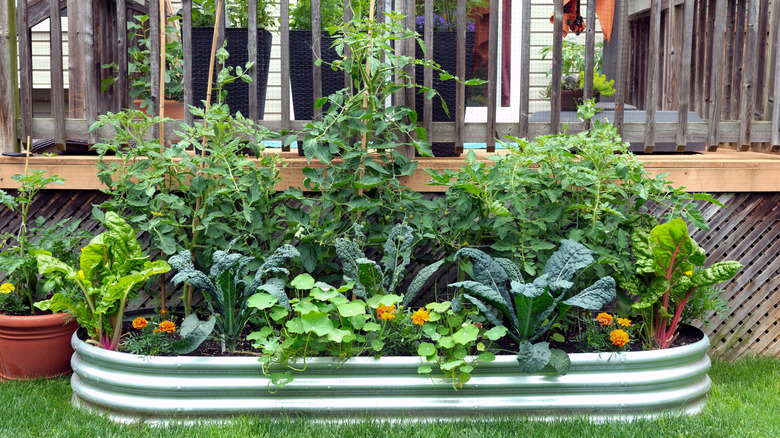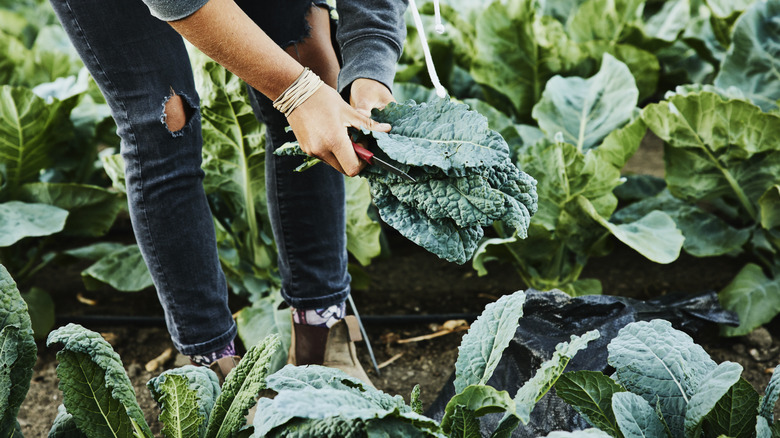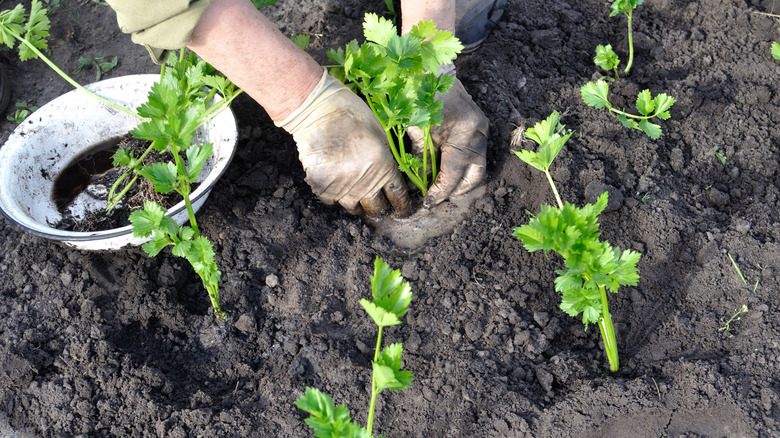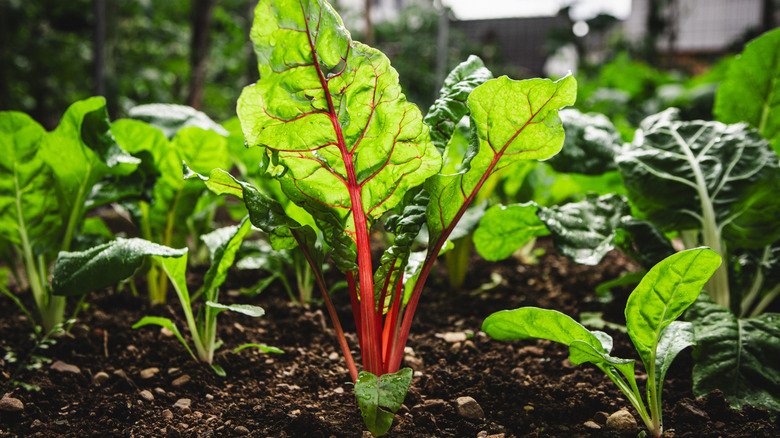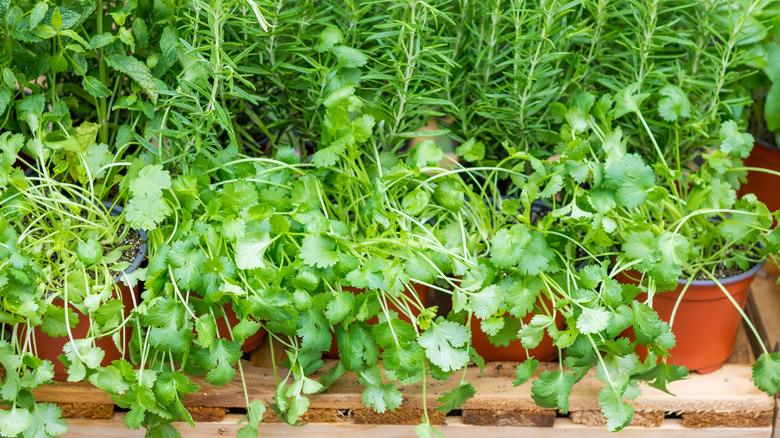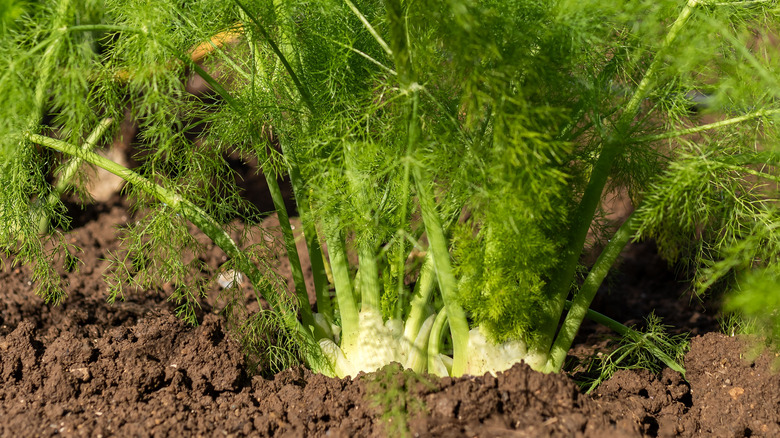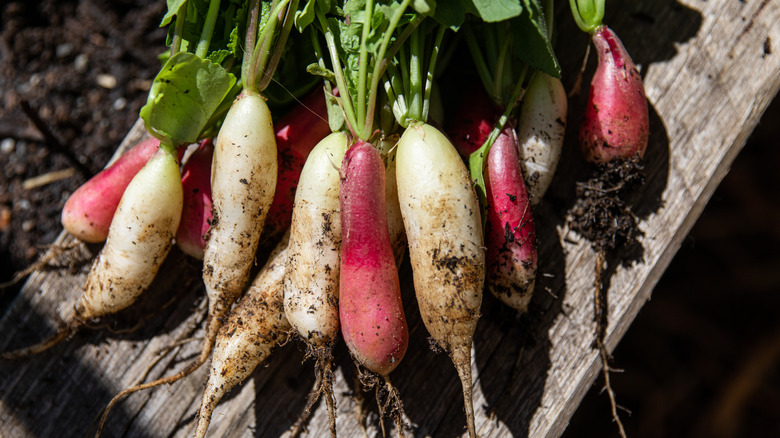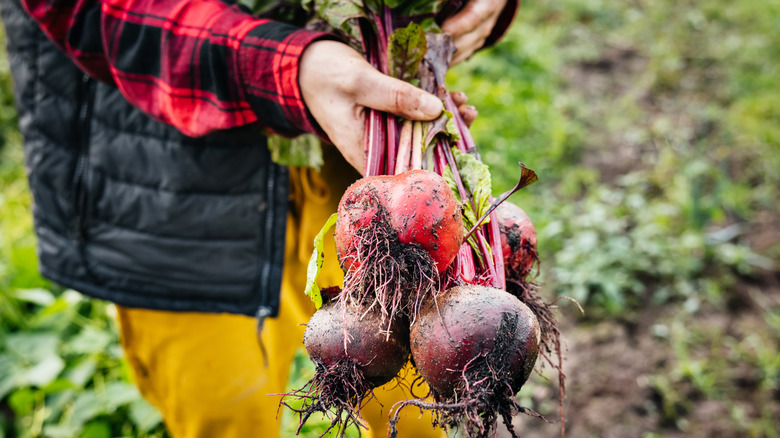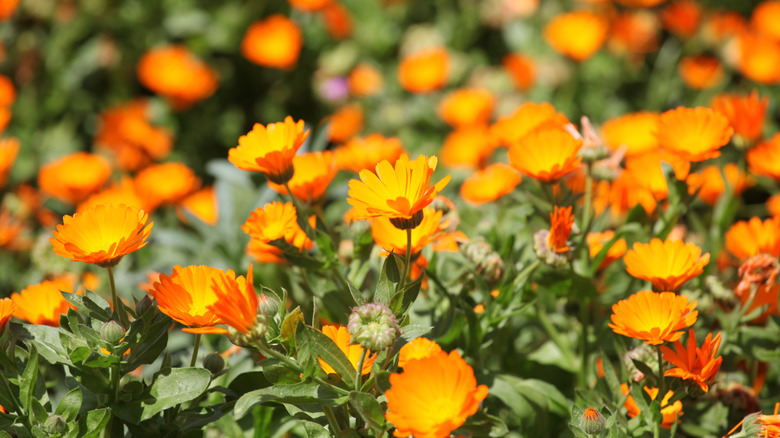11 Companion Vegetables You Should Plant For A Thriving Fall Garden
The end of summer is the perfect time to get your fall garden situated right before hunkering down for the first frost. Companion planting — the practice of growing certain plants together for mutual benefit — can improve growth, protect against pests, and enhance soil health. By strategically pairing certain herbs and vegetables together, you encourage stronger yields and a healthier garden ecosystem. Fall gardening presents unique challenges: shorter daylight hours, cooler temperatures, and a surge of pests preparing for winter. Companion plants act as natural allies, reducing the need for chemicals and improving resilience in the process. It's a chemical-free way to protect your plants, letting nature take over instead. With the right combination, your fall garden will feel vibrant and full with little maintenance until the onset of winter.
In addition to boosting productivity, companion plants can attract beneficial insects, repel harmful ones, and even enrich the soil with vital nutrients. For example, some leafy greens help retain moisture for neighboring plants, while aromatic herbs confuse pests that might otherwise target nearby vegetables. Fall gardens also offer a surprisingly stunning visual feast when clumps of bright flowers and greens grow together, making your backyard both functional and beautiful. Whether you're planting kale, onions, or beets, knowing which plants support each other ensures a harmonious garden that shines even as the temperature starts to drop.
Kale
Kale is more than a nutrient-rich superfood — it's a protective companion in a fall vegetable garden. Its robust leaves provide shade and shelter for smaller crops, like lettuce and spinach, helping to retain soil moisture in the process. The plant itself also attracts aphids, which are a common food source for ladybugs and lace wings, bringing more of these beneficial predatory insects to your garden. Its sturdy structure and fast growth make it a reliable garden anchor, supporting plants both physically and ecologically. A kale companion patch strengthens any fall garden while also providing fresh greens through colder months.
Onion
As a kitchen staple, onions are an indispensable plant in any fall garden. Their pungent aroma deters pests like aphids, carrot flies, and Japanese beetles, protecting nearby vegetables like carrots, beets, and lettuce. Onions are easy to grow and tolerate colder temperatures, making them ideal for fall planting. Interplanting onions with leafy greens and root crops can reduce disease risk and improve overall garden health. In addition to their pest control benefits, onions require minimal care and space, allowing them to thrive alongside other fall vegetables while enhancing growth and flavor in neighboring crops. It might be simple, but it's surprisingly beneficial, too.
Celery
Celery isn't just a crunchy addition to the kitchen — it's a surprisingly beneficial companion to grow. Its strong scent helps repel cabbage pests like loopers and worms, making it a great partner for the brassicas family. It also pairs well with tomatoes and onions, where both pest resistance and flavor benefits are noted. While celery itself doesn't attract beneficial insects, planting it alongside flowers such as camomile or cosmos draws parasitic wasps and hover-flies that prey on pesky aphids. As a cool-season crop, celery thrives in fall gardens, balancing its culinary value with some necessary pest management.
Chard
Chard is a colorful, hardy green. Its large leaves provide ground cover and plenty of shade for smaller plants such as lettuce and radishes. Chard also deters pests like leaf miners when planted near onions or carrots. It tolerates light frosts and can keep producing into late fall, providing fresh greens after more tender crops have died back. You should avoid planting chard near other members of the same family like beets, as they can attract similar pests to your garden. Its vibrant leaves also signal a healthy garden ecosystem, providing practicality and aesthetics while supporting a variety of neighboring vegetables during the cooler months.
Lettuce
Lettuce is a fast-growing, low-maintenance crop that thrives alongside many fall vegetables. Its shallow roots allow it to be planted near deeper-rooted crops like onions and carrots without competition. Lettuce benefits from taller surrounding plants like kale or chard, which provide partial shade, but they may also compete for nutrients with your lettuce. Additionally, its presence can suppress weeds, keeping garden beds healthy. Planting lettuce near radishes and beets improves moisture retention and reduces the risk of diseases. With rapid growth and continuous harvest potential, lettuce seems to be the ideal pick for any homeowner's first fall garden or a recurring fan favorite pick.
Parsley and cilantro
Parsley and cilantro are versatile herbs that attract predatory insects like ladybugs and hoverflies, which target aphids and caterpillars. When planted near tomatoes, onions, or peppers, these herbs boost overall garden health and reduce pest pressure. Both herbs tolerate cooler fall temperatures and can fill gaps between larger vegetables with ease. Their aromatic foliage also confuses pests and can improve the flavor of surrounding crops. Planting parsley and cilantro, either together or separately in clusters around leafy greens or root vegetables, enhances the ecosystem of your fall garden. It's a natural support system for stronger, healthier plants.
Fennel
Fennel is an aromatic herb that attracts beneficial insects like parasitic wasps, which help control aphid and caterpillar populations. Planting fennel near cabbage, broccoli, or Brussels sprouts can reduce damage to leaves, making it an ideal companion for members of the basilica family. However, many gardeners shy away from planting fennel near their other vegetables, as it can inhibit the growth of other plants. While fennel should be planted slightly farther from some sensitive herbs, its pest-deterring qualities make it valuable in mixed vegetable beds. By strategically placing it in your fall garden, you encourage healthy growth and reduce reliance on chemical intervention.
Radishes
Radishes are fast-growing root vegetables that act as natural pest repellents and soil indicators. Their pungent roots can deter flea beetles and leaf miners from attacking slower growing crops like lettuce. Radishes break up compacted soil, improving aeration for neighboring plants. Planting radishes near cabbage, kale, or spinach provides early harvests while enhancing garden health. These plants can notify you of any changes in soil conditions and radishes can even tell you if your homemade compost is ready. Quick growth cycles allow repeated planting throughout the fall, providing both protection and edible yields. Radishes offer a practical, multi-functional companion for a thriving fall vegetable garden.
Beets
Beets are a versatile root vegetable that tend to grow well in cooler fall soils. Planting beets near onions, lettuce, or chard can improve flavor and deter certain pests. Their deep roots help loosen soil, allowing better nutrient absorption for neighboring crops. Some varieties of beets can be used to shade the soil and retain moisture, improving the overall health of your garden. With their vivid color and high nutrient content, beets add both visual interest and some surprising practical benefits to a fall garden.
Calendula
Calendula is a cheerful, orange flower that might be an unexpected plant in a vegetable garden. Its bright blooms attract more pollinators and predatory insects, helping to support crops like peas, tomatoes, and carrots. Calendula's petals also repel pests such as asparagus beetles and tomato hornworms, reducing the need for chemical intervention among edible plants. Beyond pest control, Calendula adds a much-needed pop of color and edible petals for salads or teas. Thriving in cooler fall temperatures, it creates a natural protective barrier for neighboring vegetables, making it a must-have companion for gardeners seeking beauty and productivity from their autumn beds.
Turnips
Turnips are a hardy fall crop that do more than provide crisp roots for the kitchen; they can boost the performance of other vegetables. Their fast growth helps shade out weeds, reducing competition for slower-growing neighbors like broccoli, peas, and spinach. As they develop, turnips naturally loosen compacted soil, increasing airflow and drainage in the process. It is best to keep them away from other root vegetables like carrots, potatoes, and radishes to avoid competition over nutrients. Whether grown for their roots or leafy greens, turnips are a versatile companion that supports healthier, more productive garden beds throughout the cool fall season.
